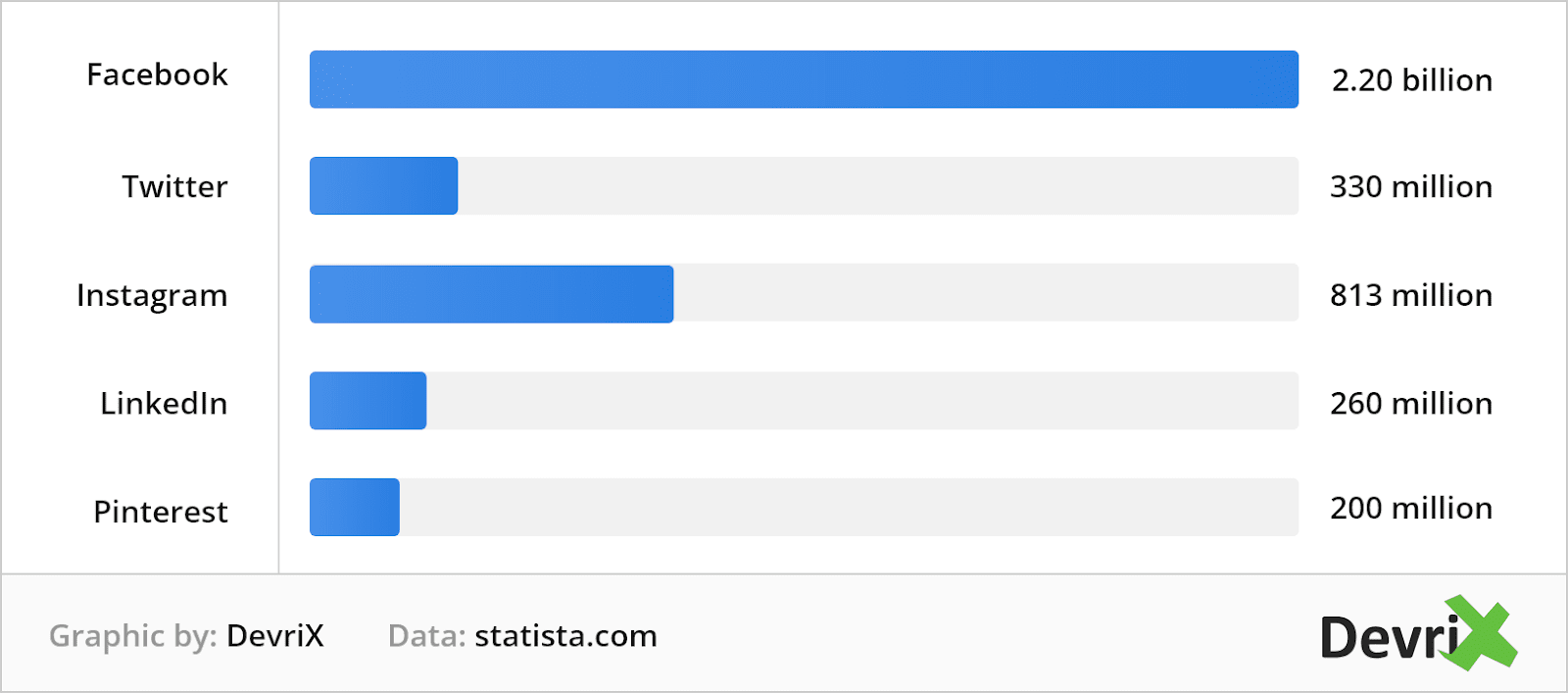Have you ever felt envious every time you see your business competitors working their way toward success with online customers and on social media? Don’t worry, you’re not alone. The good thing is that you can come out of the shadows and start reaping the benefits of social media. You can create your own online success through a social media strategy.
Companies that actively experiment and exploit a social media mindset and capabilities in their business processes will transform their relationships with customers and create value in unforeseen ways. No matter how big or small your business enterprise is, as long as you have the right plans and strategies, you will achieve the goals you have been aiming for. Strengthen your company and your brand by harnessing the power of social media marketing. Here are some few tips on how.
1. Set Your Goals
An organization that knows where to go should know the necessary steps needed to get there. Without planning and without determining goals, you won’t be able to measure if your social media efforts are paying off.
Like any business endeavor, it’s crucial to set goals that will be your guidelines when planning your social media strategy for your company. Those goals should fit in perfectly with your business goals. Having the right goals can be the difference between wasting time and leaving a true footprint online. For this purpose, your goals must be specific, measurable, achievable, realistic and time-based (SMART).

Social media is all about engagement on a given platform. This is about building relationships, and it is much bigger than sales. With this in mind, let’s have a look at each of the five traits of the S.M.A.R.T goals framework and see how they can help you set proper social media objectives:
- Specific – When determining goals, you have to be specific. For example, you can say that you want to reach 1000 followers on your Twitter profile this month. That is an example of a clear goal that you can focus your efforts on for an upcoming month.
- Measurable – If you’re not able to measure your goals, it means that they’re not specific enough. You need to have a full overview of your goal progress and to tell whether you’re getting closer to achieving success online or not. If you don’t follow the increase in retweets and followers, how can you know that you’ve moved closer to those 1000 followers per month?
- Attainable – Stay comfortable in your SMM efforts by determining goals that are attainable. It’s a lot more realistic to gain 1000 new likes than 1 million in a month! 1000 likes are realistic and challenging, plus, they will instantly move you to the next level – 2000 likes.
- Relevant – Make sure that your goals are relevant enough to be aligned with your core business strategy. If you’re just after the follows and likes without bringing a substantial amount of traffic to your blog, your efforts on social platforms will be wasted.
- Timely – It’s not a goal if it’s not attached to a timeframe. By giving the goal a deadline you will also keep yourself and your team accountable.
2. Identify Your Audience
Once you’ve set your social media goals, it is time to learn more about the audience that follows you online. Knowing your social media audience is important because this is where your target audience is. You will discover how to best capture their interest and how to reach out to them. When you find your target audience, social media becomes a strong tool that can lead your followers to your website and ultimately convert them into customers.

To get a full grasp on your target audience, you need to ask yourself the following questions:
- Do I have an ideal buyer for my product/service?
- How old is the ideal buyer?
- Is the ideal buyer male or female, or both?
- What is his/her income level?
- What is his/her educational level?
You can also narrow down your audience by looking at personal characteristics, values, interests, and hobbies. The more you branch out, the more effective your social media approach will be.
3. Know Your Competitors

Understanding the data surrounding your customers and demographics can lead to smarter decisions when it comes to social media marketing. But, did you know that understanding your competitors can also give you a competitive advantage?
To gain a competitive advantage, you must know who your competitors are, what they do and what you can do to outperform them. Just looking at their posts on social media is not enough. You need to gather data and analyze it.
Social media competitive analysis can provide you with valuable data on what works the best in your target industry and what segments you need to improve. There are 4 basic steps that you can do to analyze your competitor’s social media success:

- Identify Them – Use Google to search for the keywords that your audience uses and see what companies come out in the top results. Go to each website and see if they’re active on social media or not. Focus on your competitors, find the ones that are really active on social platforms and use them as a business growth tool.
- Compare – See how you fare compared to your competitors. For example, if the competition has a Facebook page, start with basics like their numbers of followers and likes. Look for specific tabs and features that they use on their pages. See what they highlight on their pages and if there’s a trend that offers results, you can then adapt it for yourself. For Twitter and Instagram, notice if there’s a big number of likes and comments on photos and tweets. Examine their top posts and see what hashtags they use. Then, compare that data with your profile and see what you can use to improve your strategy.
- Analyze Activity – Examine your competitor’s social media activity. Look at the last time when they posted a status, article or post. What is the time span between these posts? Do they reply to comments on their posts?
- Inspect Their Websites – A lot of your competitors can use their websites as platforms where they create content to share on social media. The first thing you need to do is to see which competitors have a blog. Researching their articles will give you a sense of what resonates with their audiences. Enter each of the websites in BuzzSumo and find the content that has the most shares.
Make the necessary changes in your social media strategy based on your findings.
4. Choose the Right Channel
The next step you need to take is choosing the best social media channels that can propel your business growth. There are numerous factors that can influence your decision. First, let’s have a look at the most popular social networks by monthly active users:

You can see that Facebook is way ahead of other social media platforms. But, should you decide where to build your online presence based on the platform’s size?
Size matters, if you want to reach to a big pool of people. The chances that your clients are in one of the social networks above are huge. However, there are other factors that you need to consider when creating a social media account for your company, such as:
- More people means equals competition for attention?
- Are the customers really on that specific network?
- Does the network fit with the ideal customer demographics?
- Is the target industry actively present on those channels?
The questions above can help you to reconsider your decision before joining a specific network. If you’ve already formed your target personas and you know their age, income level, gender and so forth, you can line up that data with the social media demographics and determine which network will work the best.
You can also determine your social media channels based on the content that you’re going to create. For example, if you create video and images for your brand, you can use Pinterest, YouTube, Instagram, Facebook etc. If you have a business-development focused content that is in the form of articles, LinkedIn is perfect for you.
If you can’t handle the presence of each of the main social channels, you need to take a big step back and see the bigger picture. Analyze the statistics and your audience, and ask yourself the questions above.
5. Create a Content Strategy

With SMART goals, a target audience, knowledge of the competitor and chosen channels, you are now ready to create the content for your social media strategy.
Content marketing is a marketing strategy that is used to create valuable and relevant information for your target market. Target customers may obtain information about your product or a solution to their problems helped by your product/service. Content can be shared through articles, blogs or short write-ups. The main objective is to obtain a profitable response from your social media audience.
The two main reasons why you need a content strategy for your social media efforts are:
- It saves time by knowing what to do before you do it. In other words, have a game-plan in place.
- Explore social media and content tactics and why they will work or not for your business.
Before you start developing content for social media, you have to know what are you going to create upfront, how you’ll create it, and most importantly, why you’ll create it?
Another key question is, how will your audience benefit from the content that you are going to publish on your channels?
There are four major pieces of the perfect social media content strategy:
Research

If you want to understand the content that will resonate with your target audience, research is the solution. You can start by analyzing your social media profiles and looking at your Facebook, Twitter and LinkedIn insights to identify your audience demographics. Remember that audiences may be different on each of the social networks.
Next, examine the effect of your previously posted content. Find your best-performing posts and make a list of these posts. These are the same types of content that will help you succeed in your future social media efforts. Perhaps your best-performing articles are listicles, and on Instagram, you fare best with your motivational posts.
Competitor Analysis
Looking at your competitors that have an excellent social media strategy is an excellent source of inspiration. But be careful, we said inspiration, not copying. Look for gaps in their content strategy, see what type of content they don’t publish and whether or not you can offer that to your audience.
Goal Setting
When setting goals for your social media content strategy, you can set overall content goals and more specific content goals. For example, a solid overall goal would be to increase your website traffic by 30% with the help of your Twitter feed. And a specific goal would be to get 100 clicks to your website by posting 50 tweets in one week.

Content Sharing
The last piece of the social media content puzzle is content sharing. Think about the type of content that you will share and on which social network you will share the content. Your best bet is to start with the content that performed best and gradually create more that’s similar or better for sharing.

You can actually increase your financial bottom line through content marketing. There should be a positive relationship between your content and your customer’s needs. Think of it as improving the overall user experience. Follow these actionable tips to ace your social media success.
6. Allocate Your Budget

Social media marketing is basically free. However, there are some costs involved, including payment for sponsored ads and for any staff who manages your website. Also, you must consider the time it takes to write your content and the efforts made toward making things work.
The success of your social media marketing will depend mostly on your resources and how you can use them to achieve online success. There’s no one all-around approach when it comes to allocating your social media budget. That’s the advantage and beauty of social media marketing. You can experiment with advertising for $50. For $2000, you can hire an expert that will transform your entire marketing strategy successfully. And for $20,000, you can hire an entire marketing agency to develop and run your online marketing campaign.
In addition, competitors are just around the corner. All the more reasons for you to level up and do something different, something your competitors are not doing.
7. Assign a Team to Manage
Facebook, Twitter, Pinterest or Instagram are there. But if no one monitors your page, nothing will actually happen. It is highly important to assign a team of experts to manage your social media sites.

Have someone who can do activities such as content writing, proofreading, posting, scheduling, responding to queries and comments, etc. Your social media management team should always be aware of what’s trending on the web, and thus work to consistently boost interest in your site.
When you create your social media marketing team, make sure that you bring in people that are:
- Creative
- Collaborative
- Curious
- Detail-oriented
- Social
- Sense of Humor
The various roles of your social media team might be:
- Social Media Manager – Social media managers are on top of things from developing marketing strategies to operating social media channels. The person in charge of social media management must oversee all communications and control the channels. This person decides who has access to editing, publishing, and account passwords.
- Analytics Person – The person responsible for your analytics must look for positive and negative trends in the stats, and consequently, make changes in the strategy. This also involves testing hashtags, types of content and media, message phrasing, and time of day for publishing.
- Content Creator – If you want to perform excellently on social media, you’re going to need a person that can write and develop superb content and social media text.
- Campaign Manager – You’ll also need a person that is able to run an entire paid social campaign. The overall success of this role will depend not solely on the person responsible, but also from the collaboration with colleagues that run social media management, analytics, content, and community management.
8. Maximize User Experience

via Neil Patel
While you should actively use social media to publish your content, you should also think about the customer experience and how the users feel when they see your posts. You need to use social media to maximize the user experience as much as possible.
You don’t want to be over-promotional and end up with unlikes and unfollows. Before you publish a post, you need to think about what the audience expects when following you. Besides your promotional messages, you can showcase your company culture and encourage conversations where customers can provide feedback and express their points of views.
If your customers or your fans have complaints and express them on your social channels, respond quickly and with urgency. You can’t ignore negative feedback and just continue publishing content. This will show that you don’t have respect for your audience, and everyone will make a note of that, starting from fans and all the way to your customers.
Besides responding to negative feedback, you should not forget positive feedback too. On social media, your customers can be the biggest advocates of your product/service. You should also offer discount codes, giveaways or other motivations that will make people recommend you online, share your page or retweet your content.
Make your target market feel valued. From the point of inquiry, product purchase, customer service, and after-sales care. Provide the most outstanding service possible to maximize customer experience. It is always important to listen to your customers and provide feedback.
9. Build Rapport
The relationship between you and your audience on social media is strengthened by mobile phones and other gadgets. However, your service to your audience should not feel limited. After all, we are humans and not robots. Make your customers feel that you understand them.

Aside from the online interface, interact with your customers by posting stories, current events, and true-to-life based scenarios. This can build trust and further strengthen the brand. In addition, when something goes wrong on social media, admit your mistakes and provide the best solution possible.
10. Advertise Across Channels
How many social media accounts do you have as a user? Two or more probably? Well, this also holds true for your social media audience. Your followers on Twitter probably have an account on Facebook, Pinterest, Snapchat, Quora and more. Because of this, do not limit your strategies to just one social media site.

For example, a famous TV show about cooking can showcase cooking demonstration videos on YouTube and at the same time upload photos via Instagram. A home-grown pastry shop that engages with a target market via Pinterest, can also post baking how-tos on Facebook. Individuals can also connect with each other through WhatsApp and Viber. The opportunities for your business are endless.
11. Respond to Feedback
Feedback is good. There is never bad feedback. It all depends on you how you react to it. Listen to everything your social media audience has to say. Think of it as an opportunity for you to improve.

Respond to feedback as soon as possible. The faster you respond to their concerns, the better. Moreover, answer their questions as honestly as possible. Provide troubleshooting details related to the products you are offering. It is important to analyze what your customers really want and take it from there. You know your business, so you know how to assist your customer’s needs better.
Take Southwest Airlines’ customer care social as an example. The company has a social listening center where customers can access the platform and voice their concerns about flights. The company has effectively used social media to monitor customer complaints and suggestions online. In return, customers have responded wonderfully.
12. Use Video to Send a Message
 A picture is worth a million words. However, a captivating and relevant video says even more. Videos offer a huge opportunity to impact the success of your social media site by driving traffic and converting leads to sales. You can also use explainer videos and whiteboard animations to deliver your message quickly and clearly. But if you don’t have the skills to create great explainer videos, you can outsource this to a creative agency for a minimal fee. For example, Asana always highlights the changes in the platform with short and beautiful explainer videos:
A picture is worth a million words. However, a captivating and relevant video says even more. Videos offer a huge opportunity to impact the success of your social media site by driving traffic and converting leads to sales. You can also use explainer videos and whiteboard animations to deliver your message quickly and clearly. But if you don’t have the skills to create great explainer videos, you can outsource this to a creative agency for a minimal fee. For example, Asana always highlights the changes in the platform with short and beautiful explainer videos:
Wrapping Up
There’s no doubt that social media marketing can play a big role in the success of your company. If you use social media strategically, it can be the most powerful form of marketing that you’ve ever used. But, just like many other long-term successes in business, it doesn’t happen overnight. The art of harnessing the power of social media marketing is about finding the best places where you can connect with your audience and ignite interest in your products/services.




